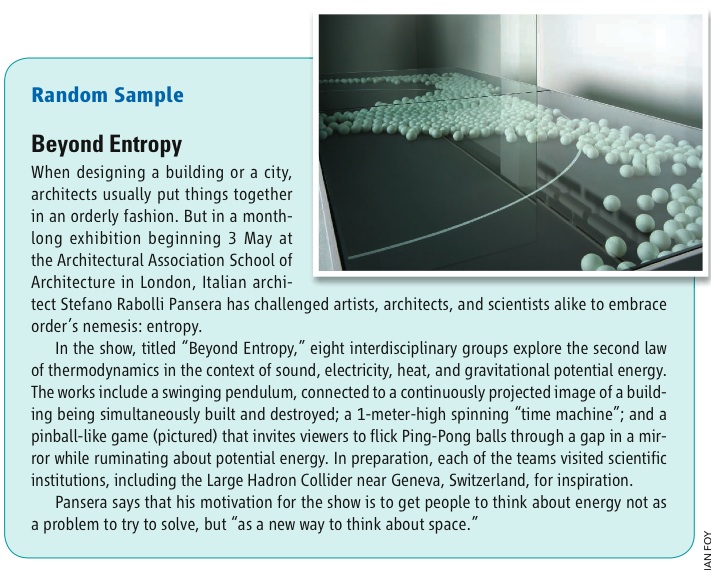Last week, the Court of Arbitration for Sport (CAS), considered the world authority in sporting disputes, ruled in favor of the International Cycling Union in its doping case against the Italian cyclists Franco Pellizotti and Pietro Caucchioli. The two cyclists had been barred from riding competitively for 2 years (Pellizotti from May 2010, and Caucchioli from June 2009), but had appealed. Neither cyclist was caught with an illicit substance in blood or urine samples provided to doping officials. Instead, the charges were based on evidence collected as part of a new anti-doping program—the Athlete Biological Passport (ABP)—that builds biological profiles of athletes and detects suspicious changes in their blood. “It is a significant step in the global fight against doping in sport,” says David Howman, director general of the World Anti-Doping Agency (WADA).
Below, ScienceInsider answers a few questions about how the ABP works, why scientists developed it, and where else biological passports might be used.
What is the Athlete Biological Passport?
Unlike previous anti-doping methods that looked for traces of performance-enhancing substances in athletes’ blood and urine, the ABP enables detection of changes in an athlete’s blood chemistry that could be a consequence of doping. The strategy depends on creating a blood profile, or passport, essentially a model predicting a person’s natural blood chemistry. Researchers factor in an athlete’s sex, age, ethnicity, and measurements, at different altitudes, of various properties of the individual’s blood, such as the concentration of oxygen-binding hemoglobin; reticulocytes (immature red blood cells); other red blood cells, which athletes sometimes increase by illegal blood transfusion; or presence of hormones such as Erythropoietin (EPO) and other substances. Once about five blood samples have been tested to establish a baseline, athletes who have abnormal readings in subsequent tests are flagged as doping cases.
This personalized approach is particularly important as some athletes naturally have odd blood chemistry that might suggest doping. Some for example, have high reticulocyte counts—2% of one’s red blood cells rather than the typical 1%. Reticulocyte counts are sensitive to blood doping and so are typically tested for by doping monitors. But the ABP approach looks for significant changes in reticulocyte counts, rather than at absolute numbers, and thus avoids flagging athletes with naturally elevated reticulocyte levels.
Once they have a passport, “athletes are tested three to 10 times a year,” says Neil Robinson of the Swiss Laboratory for Doping Analysis, who helped develop the ABP strategy and is involved in monitoring athletes’ profiles for irregularities. If any are spotted, the athlete’s profile is assessed by an international panel of three blood-doping specialists. If a unanimous agreement is reached by the panel that the blood chemistry can’t be natural, then the athlete can be suspended from competition.
Why was there a need for a new approach?
In the 1990s, international sports federations were struggling to combat the rising use of performance enhancing EPO, a hormone that controls the process by which red blood cells (erythrocytes) are produced. Athletes were using EPO to boost their overall red blood cell count, which increases endurance. At the time, there was no direct detection of exogenous EPO in urine. And so to combat EPO use, athletes were required to provide blood samples because many blood properties, such as levels of hemoglobin and hematocrit (the proportion of red blood cells that make up blood), are sensitive to the hormone’s stimulation. But, notes Robinson, “it was not long before athletes found new tricks [to evade detection]. … They could drink a lot, or inject isotonic saline.”
In 2000, as part of an anti-doping campaign inspired by that year’s Summer Olympic Games in Sydney, researchers began to look around for alternative testing methods. WADA convened a meeting of international sports federations and formed a consensus that the best solution was to establish a baseline profile of an athlete’s blood and monitor for variations.
In 2009, WADA approved the use of the ABP, which had been developed in the intervening years by Robinson and his colleagues Pierre-Edouard Sottas and Martial Saugy of the Swiss Laboratory for Doping Analysis.
Pellizotti and Caucchioli, the two Italian cyclists, are the first athletes whose charges under this new testing approach have reached CAS. The court’s rejection of the cyclists’ appeals appears to give the use of ABPs a major boost. “These decisions send a strong message to athletes who take the risk to cheat that they will ultimately be caught,” says WADA’s Howman.
But not everyone is convinced that ABPs are the full solution. Anti-doping agencies have suggested that ABP should work in tandem with traditional testing, which looks for disallowed substances in blood and urine. Former professional cyclist Floyd Landis, who was stripped of his 2006 Tour de France title after testing positive for doping, and who has since admitted that he used performance-enhancing drugs, has argued that athletes can still get around the biological passport system because it relies on catching fluctuations in blood profiles between time points. Landis raises the concern that riders can combine small doses of EPO with transfusions of their own blood to boost performance, while remaining undetectable to the ABP.
What’s the future for biological passports?
Robinson thinks it is likely that ABP’s will be used to evaluate doping in the 2012 Olympics, although he cautions that the International Olympic Committee has yet to confirm this. He does expect that it will be adopted for future Olympics, however.
The biological passport concept may have uses outside of sports. “This approach is extremely interesting for individualized medicine,” says Robinson. We don’t all react the same way when we take a drug. he points out. The idea behind the ABP is being extended to hospitals where doctors hope to use it to predict how patients might react to a new drug based on their sex, age, and ethnicity, as well on their blood profile, according to Robinson. He notes that patients in hospitals regularly have their blood work tested, but doctors don’t tend to pull this data together into any sort of record or profile. This wasted information could be used to refine treatment, he suggests. Robinson says he hopes to soon publish work on such medical biological passports.
:: Read original here ::
 A gene that causes bacteria to become resistant to antibiotics has been found in drinking water in New Delhi, India. NDM-1 is commonly found in Escherichia coli but can spread to other bacteria thanks to their ability to swap DNA. The gene confers resistance to antibiotics, including potent, last-resort drugs called carbapenems.
A gene that causes bacteria to become resistant to antibiotics has been found in drinking water in New Delhi, India. NDM-1 is commonly found in Escherichia coli but can spread to other bacteria thanks to their ability to swap DNA. The gene confers resistance to antibiotics, including potent, last-resort drugs called carbapenems.